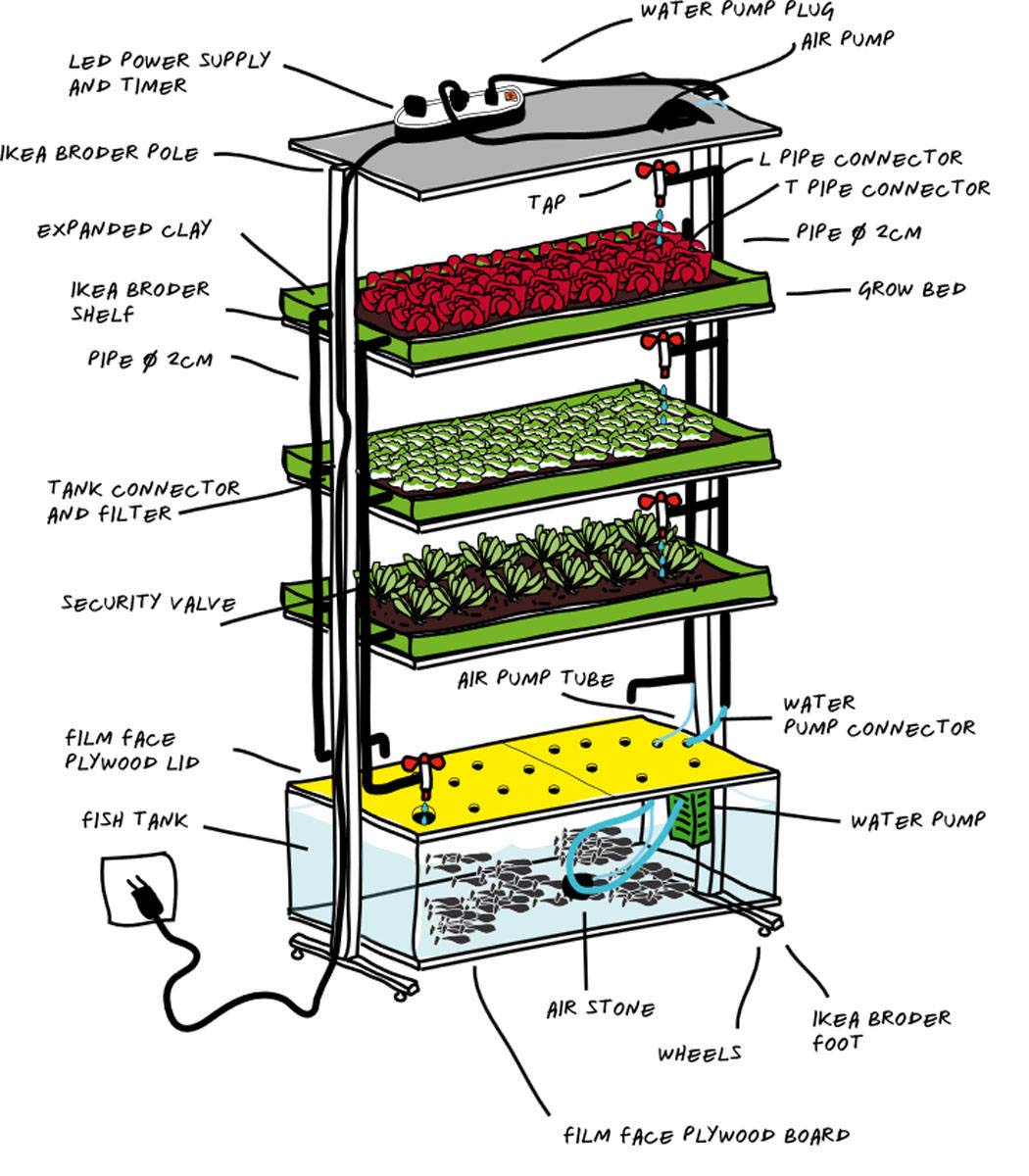Symbiotic Aquatic Organic Vertical Farming
Traditional farming requires large tracts of land to grow crops upon. In order to make a tract of land economically viable with traditional methods, rows upon rows of land must be cultivated along with similarly large tracts of land to lie fallow in recovery between growing seasons. But as the population grows, the need for land to build homes diminishes the land available for farming and thusly a conundrum starts to occur: How to feed the increasing masses of people with less and less land. But the concern is not only to just feed the masses but then to maintain the health of the crops spread over such large areas while attempting to maintain their nutritional value. GMO advocates have attempted to address these issues by genetically altering plants but many people are looking for other less invasive ways of growing food that do not need pesticides or genetic alternations to maintain integrity.
Traditional methods of crop dusting with pesticides has been employed because the land areas are too vast to police for pests on an individual plant basis. Then land stays fallow because soil needs to be replenished with the nutrients that the crops leech from it before planting again and the cycle continues. It seems such a waste of space and energy to keep land fallow when demand for crops increase and the cost for growing them start to rise also.
While most people are starting to look at the negative effects of pesticides and the increasing cost of grocery store produce as well as the ever decreasing nutritional value of transported crops, many people are starting to look toward locally and organically grown produce. But again, price and availability tend to be barriers to those looking to eat in a healthier, more nutritionally sound manner and lack the acreage to traditionally farm for themselves.
A solution to all these issues lies in symbiotic aquatic organic vertical farming. This method of small farming uses translucent or clear water-tight containers set in vertical rows on portable apparatuses that can be wheeled around to allow the best access to sunlight as the specific crop requires. This negates the need for large tracts of land and can be as large or as small to fit the needs of the grower.
Within these water tight containers fish are placed, for the small or home farmer this usually means gold fish as they are the easiest and least expensive to maintain and are known for producing a lot of waste. However, large growers can grow farmed food fish while coupling with aquaponically grown produce. The lids or trays to the water tight container have holes to insert the roots of the starter plants. As the plants grow, the fish eat the roots and defecate in the water producing fertilizer for the plants that in turn grow healthier. Most seeds are sprouted in seed sprouting pods and continue from there.
Since no soil is used, there is less possibility for pests or other ground molds to infect the plants and it is easier to inspect the racks of plants to ensure health alleviating most of the need for pesticides. Plants that do not seem to be thriving are easily pulled from their opening and replaced by a healthier starter with very little effort and mess. It is important to constantly monitor the water to ensure that the proper environment for the fish is maintained.
Some crops stand too tall to use the vertical method, or some are root vegetables that cannot be grown using the aquatic method so there will always be need for tracks of land and soil for producing all the different types of produce that are cultivated. However, the vertical aquatic method is a useful and viable alternative for those looking to grow a lot of organic produce in a small space and has been chosen as one of the methods for producing food in a self-sustaining community program.
Vertical farming can be done no matter where one lives as long as there is access to sunlight. Using the symbiotic aquatic organic vertical method is well worth the effort for sustainable alternative options for those who wish to grow a lot of organically grown produce for themselves but are limited in farmable land space.
Kiki Davis

One thought on “Symbiotic Aquatic Organic Vertical Farming”
Hola buenos dias , estoy muy interesada en hacer una granja de acuaponia, ustedes realizan el proyecto y surten el material necesario?